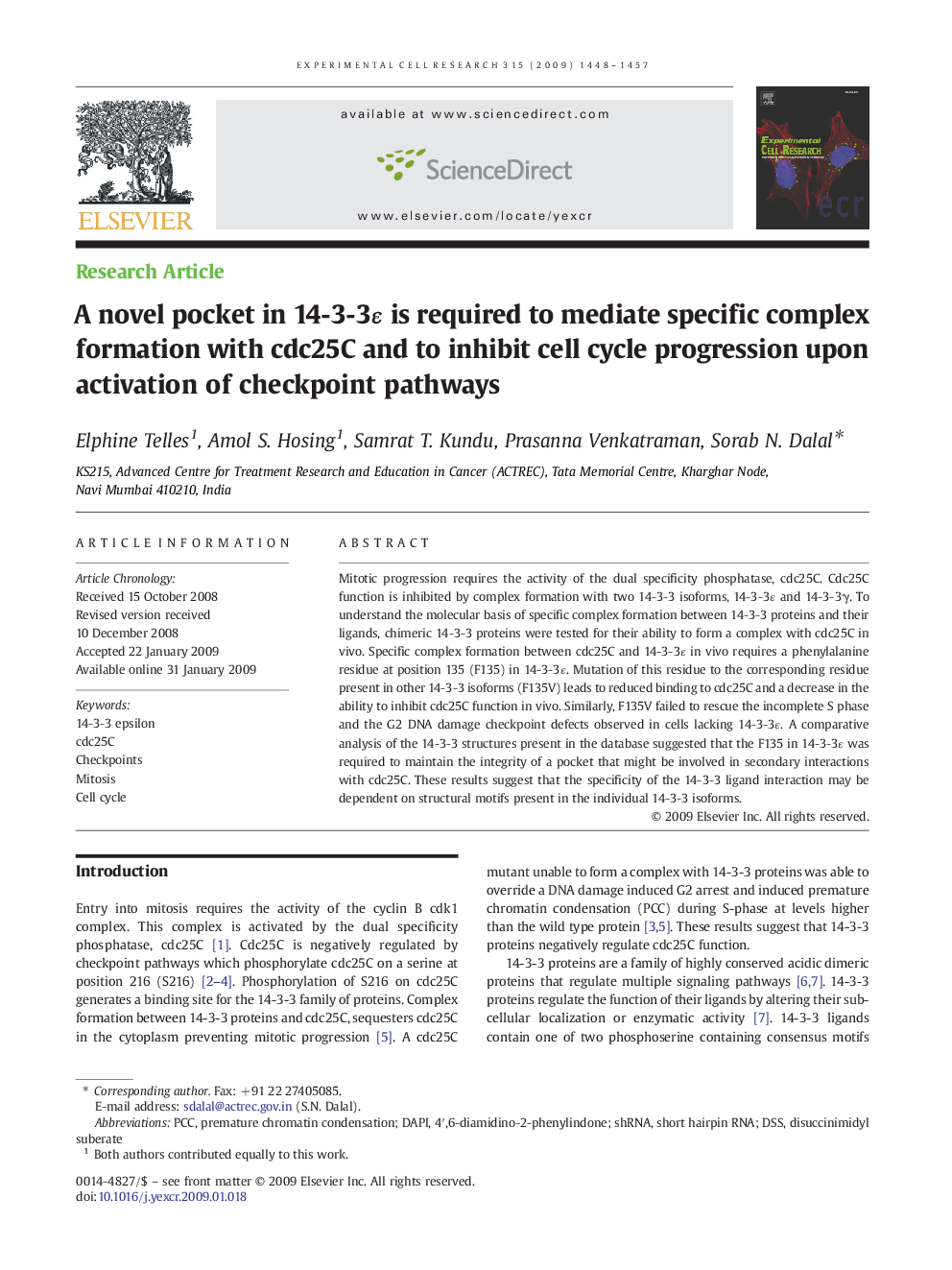| Article ID | Journal | Published Year | Pages | File Type |
|---|---|---|---|---|
| 2131419 | Experimental Cell Research | 2009 | 10 Pages |
Mitotic progression requires the activity of the dual specificity phosphatase, cdc25C. Cdc25C function is inhibited by complex formation with two 14-3-3 isoforms, 14-3-3ɛ and 14-3-3γ. To understand the molecular basis of specific complex formation between 14-3-3 proteins and their ligands, chimeric 14-3-3 proteins were tested for their ability to form a complex with cdc25C in vivo. Specific complex formation between cdc25C and 14-3-3ɛ in vivo requires a phenylalanine residue at position 135 (F135) in 14-3-3ɛ. Mutation of this residue to the corresponding residue present in other 14-3-3 isoforms (F135V) leads to reduced binding to cdc25C and a decrease in the ability to inhibit cdc25C function in vivo. Similarly, F135V failed to rescue the incomplete S phase and the G2 DNA damage checkpoint defects observed in cells lacking 14-3-3ɛ. A comparative analysis of the 14-3-3 structures present in the database suggested that the F135 in 14-3-3ɛ was required to maintain the integrity of a pocket that might be involved in secondary interactions with cdc25C. These results suggest that the specificity of the 14-3-3 ligand interaction may be dependent on structural motifs present in the individual 14-3-3 isoforms.
